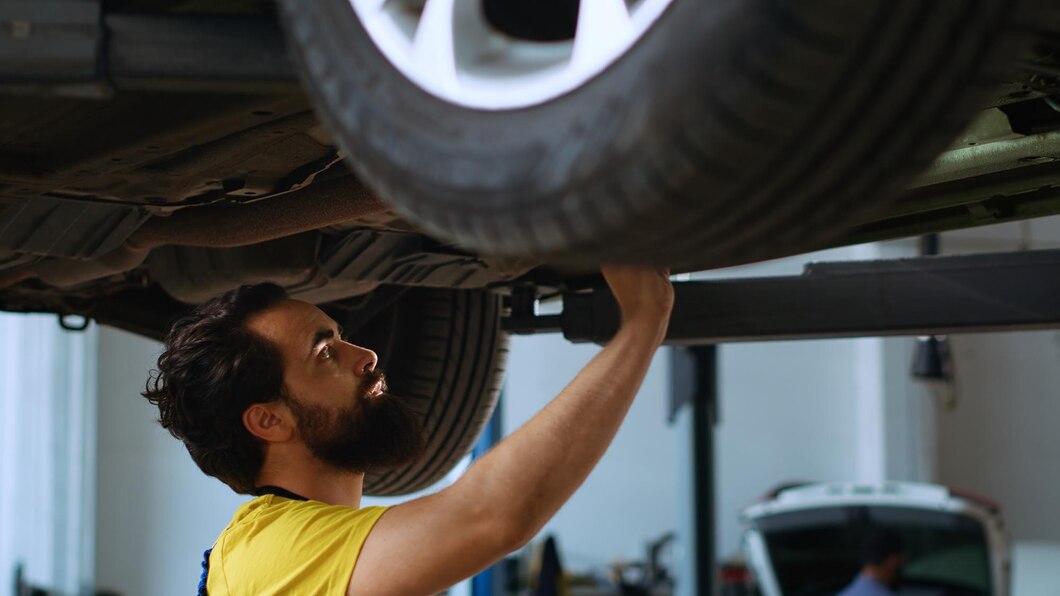The differential is a vital component in your vehicle’s drivetrain, responsible for transferring power from the engine to the wheels while allowing them to rotate at different speeds. Damage to the differential can lead to significant issues with your car’s handling and performance. Identifying early signs of differential damage can help prevent further problems and ensure safe driving. Here are some key symptoms to watch out for:
1. Whining or Humming Sounds
One of the most common signs of a damaged differential is unusual noises coming from the rear or front of the vehicle. A whining or humming sound, especially during acceleration or deceleration, could indicate worn bearings or gears within the differential. These noises may become more pronounced at higher speeds or when turning corners.
2. Clunking or Thumping Sensations
Damaged or worn-out differential components can cause clunking or thumping sensations, particularly when shifting gears or changing direction. You might feel a noticeable jolt or vibration through the vehicle, especially when accelerating from a stop or making sharp turns. This symptom often indicates loose or worn internal components within the differential.
3. Leaking Fluid
The differential is filled with gear oil or transmission fluid to lubricate its internal components and reduce friction. If you notice fluid leaking from the differential housing or axle seals, it could indicate a leak in the differential itself. Low fluid levels can lead to increased friction and overheating, accelerating wear and potentially causing severe damage to the differential.
4. Uneven Tire Wear
A damaged or improperly functioning differential can cause uneven tire wear, particularly on the tires connected to the affected axle. Excessive wear on the inner or outer edges of the tires, known as cupping or feathering, may indicate that the differential is not distributing power evenly to the wheels. Ignoring this symptom can lead to premature tire failure and additional expenses.
5. Difficulty Turning
A malfunctioning differential can affect your car’s ability to turn smoothly, especially at low speeds or when maneuvering in tight spaces. You may notice increased resistance or hesitation when steering, as the differential struggles to compensate for the varying wheel speeds during cornering. This symptom can make driving more challenging and potentially dangerous, especially in emergency situations.
6. Burning Smell
If the differential is experiencing excessive friction due to damaged or worn components, it can generate heat and produce a burning smell. This odor may be more noticeable after extended periods of driving or during heavy acceleration. Ignoring this warning sign can lead to overheating and permanent damage to the differential.
7. Dashboard Warning Lights
Some modern vehicles are equipped with sensors that monitor the differential’s operation and can trigger dashboard warning lights if a problem is detected. If you see the differential or drivetrain warning light illuminated on your dashboard, it’s essential to have your vehicle inspected by a qualified mechanic as soon as possible to diagnose the issue.
Diagnosing and Addressing the Problem
If you notice any of these symptoms, it’s crucial to have your vehicle inspected by a professional mechanic with experience in drivetrain systems. They can perform a thorough examination of the differential, including visual inspections, fluid checks, and test drives, to identify any potential issues. Depending on the severity of the damage, repairs may range from replacing worn bearings or seals to overhauling the entire differential assembly.
The differential plays a critical role in your car’s drivetrain, ensuring smooth power delivery and stable handling. By recognizing the early signs of differential damage and addressing them promptly, you can prevent further problems and maintain the safety and reliability of your vehicle. Regular maintenance, including fluid checks and visual inspections, can help identify potential issues before they escalate into more significant problems.











